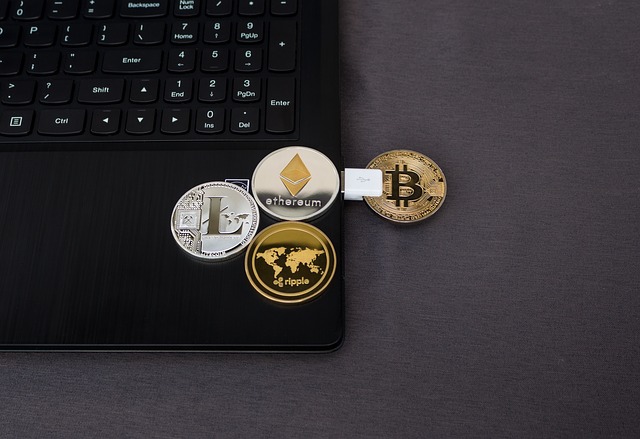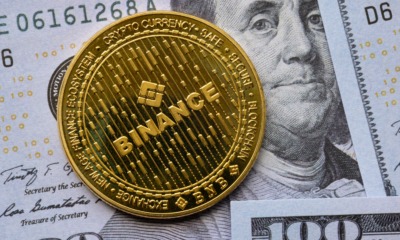Don't Miss
What Prevents Crypto from Becoming the Top Payment Method

As globalization spreads over the planet, the need for fast and cheap cross-border money transfers is growing rapidly. Cryptocurrency provides exactly that kind of transfers with the added benefits of security and lack of centralization. However, despite being what seems like the perfect solution to the global money transfer problem, crypto has yet to become a major player in the currency arena. It’s growing in popularity, that’s for sure. But that rate isn’t even close to what’s needed for crypto to become a recognized and universally accepted payment method.
The question is why?
There can be no doubt that the need for what cryptocurrency can offer is huge. It’s most obvious when considering the situation of migrant workers, who are also growing in number due to globalization. The amount of remittances in the world has risen to over $530 billion a year. However, the high cost of these transfers is such a concern that the UN launched a program dedicated to reducing those numbers to, at least, 3% by 2030.
One doesn’t need a degree in economy and finances to see what kind of difference cryptocurrency could make for this situation alone. At the moment, migrant workers are losing about $25 billion in money transfer fees. There are still some remittance corridors in remote parts of Africa where the cost of money transfers is over 10%. Using cryptocurrency will remove all these problems at once. These transactions are exceedingly cheap and if crypto is accepted as a currency in those states, people would be able to receive transfers and use their money easily.
The result is a boost to local economies, which means a boost to the global economy as well. Everyone wins, except for banks that will be losing clients. However, even those will get some benefits offering other services in countries where the economy improves.
That’s only a matter of remittances. Using similar logic, cryptocurrency can benefit every business or individual. So, why aren’t we using it as our first currency option worldwide?
Is Volatility the Deal-Breaker in the Adoption of Cryptocurrency?
Most often, you’ll hear that the reason why cryptocurrency isn’t the top payment method yet is its volatility. And one cannot argue the fact that it is indeed rather volatile, which makes investing in crypto risky. However, everyone seems to forget is that dealings in non-crypto currency are also risky. Many of the fiat currencies are extremely unstable and people have lost fortunes on trading them the same way they did with bitcoin’s fluctuations.
This has been happening for years and it won’t stop because fiat currencies, especially in developing nations will continue to be unstable. This is because those currencies lack the backing of a stable and big national bank with some actual reserve. Creating this kind of bank is only possible in the conditions of a stable and flourishing economy. Therefore, it can be argued that cryptocurrency could be a contributing factor to stabilizing fiat currencies.
Because of the FX volatility, many people today trade in top currencies, such as the US dollar, pound sterling, and euro. Due to their relative stability, those currencies are a smart investment for FX traders. However, as evidenced by the dip of sterling caused by Brexit and dollar’s fluctuations connected to the Trade War and various political factors, no currency is safe from volatility.
As this is such a big and commonplace issue in the world of finances, using volatility as an excuse for crypto’s lack of progress seems unreasonable. It’s true that cryptocurrencies are much more “dramatic” in their appreciation and depreciation. Bitcoin’s value timeline is proof of that.
However, people seem to forget that the main reason for this volatility is the lack of use. Crypto isn’t used as a currency, so its value cannot stabilize within reasonable limits. People today mostly try to treat crypto as some form of asset for investment. This, in fact, is a major reason for what is wrong with crypto today. If people actually used it as a currency, it would have been in a better position to BE a currency.
Cryptocurrency and Government Regulations (Or Lack Thereof)
Using crypto as a currency, however, is largely impossible not because people don’t want to do this, but because it’s illegal. Even in the countries where buying and trading in crypto isn’t prohibited by the law, this “currency” can’t be used to pay utilities, salaries, taxes, etc. Only a very small number of merchants worldwide accept payments in crypto. However, due to its lack of legal status, even those purchases might be tricky.
The reason why cryptocurrency is so limited in its status is that no government will recognize it as a currency today. Without governmental approval to give it the same legal status as other fiat currencies, the situation with crypto won’t be changed.
Of course, governments aren’t in a rush to elevate the status of crypto because it’s untraceable and decentralized. It also allows anonymity for payments. Therefore, cryptocurrency cannot be monitored and controlled like fiat money.
Bear in mind that the governments aren’t altogether wrong about being wary of that anonymity and lack of control. To gain some respect for their perspective you only need to remember the theft of $40 million worth of bitcoin through a hack. As crypto is decentralized and unregulated, all those people who lost their bitcoins due to a crafty hacker have no recourse. Therefore, the very principle that makes blockchain technology appealing to many is what makes it extremely vulnerable.
The anonymity angle can also be abused by terrorists, drug dealers, and other manner of dangerous criminals.
When you look at it this way, that control doesn’t seem so bad, right?
So, Why Isn’t Crypto Used All Over Yet?
Cryptocurrency offers some great advantages to its users and can truly revolutionize the global economy as a whole. For some countries, the difference cheap cross-border payments would make is truly life-changing.
However, there is also no denying the fact that crypto as it is today can be as dangerous as it is good. Therefore, it needs to evolve in order to become safer for users and the world, in general. This is a slow process because governments do not lend their support. Often, they would actually stall this development and ban cryptocurrency.
But no matter what, there are changes for the better with even big banks accepting crypto today. It will continue to evolve and, hopefully, realize its potential.
Image by WorldSpectrum from Pixabay
Don't Miss
A Guide to Exploring the Singaporean ETF market

Singapore’s Exchange Traded Fund (ETF) market has grown, offering investors diverse investment opportunities and access to different asset classes. As the market evolves, investors must navigate these uncharted waters with a clear understanding of Singapore’s ETF landscape. This article explores the trends, challenges and strategies for navigating the Singapore ETF market. To start investing in ETFs, you can visit Saxo Capital Markets PTE.
The Singaporean ETF Market: Exponential Growth
The Singapore ETF market has seen significant growth in recent years, with an increasing number of ETFs covering a wide range of asset classes and holders. different investment topics.
One of the notable trends in the Singapore ETF market is the growing diversity of available options. Investors can now choose from ETFs that track domestic and international stock indexes, bonds, commodities, and specialist sectors or themes. This diverse range of ETFs allows investors to create comprehensive portfolios tailored to their investment goals.
The growth of the ETF market in Singapore is also due to growing investor demand for low-cost, transparent, and accessible investment vehicles. ETFs offer benefits such as intraday liquidity, real-time pricing, and the ability to trade on exchanges. These characteristics have made ETFs attractive to retail and institutional investors who want exposure to different asset classes.
Regulatory Landscape and Investor Protection
The Monetary Authority of Singapore (MAS) is the…
Don't Miss
Property Loans for Foreigners in Singapore That You Must Know About

Intending to invest in a residential or commercial property in Singapore?
When it comes to foreigners applying for a loan in Singapore, things can be pretty hard regardless of the reason whether you need the property for personal or business purposes.
In Singapore, buying a property is challenging, whether you are a foreigner or a native, and sometimes applying for a loan is the only way for you to afford it.
HOW MUCH CAN YOU BORROW FOR A PROPERTY LOAN IN SINGAPORE?
As for the Foreigner Loans, in Singapore, there is an exact amount of money you can borrow to finance the purchase of a property.
In this sense, Singapore has the Loan to Value Ratio (LTV).
The LTV ratio is what determines the exact amount of money you can borrow for a property loan, which changes depending on where you try to obtain the loan:
- If you are applying for a bank loan, you can borrow a maximum of 75% of the value of the property you want to purchase. That means if you are looking for a property that costs $500.000, the maximum amount of money a bank lender can give you like a loan in Singapore is going to be $375.000.
- When you are applying for a loan with a Housing…
Don't Miss
CoinField Launches Sologenic Initial Exchange Offering

CoinField has started its Sologenic IEO, which is the first project to utilize the XRP Ledger for tokenizing stocks and ETFs. The sale will last for one week and will officially end on February 25, 2020, before SOLO trading begins on the platform. Sologenic’s native token SOLO is being offered at 0.25 USDT during the IEO.
Earlier this month, Sologenic released the very first decentralized wallet app for SOLO, XRP, and tokenized assets to support the Sologenic ecosystem. The app is available for mobile and desktop via the Apple Store and Google Play. The desktop version is available for Windows and Mac.
“By connecting the traditional financial markets with crypto, Sologenic will bring a significant volume to the crypto markets. The role of the Sologenic ecosystem is to facilitate the trading of a wide range of asset classes such as stocks, ETFs, and precious metals using blockchain technology. Sologenic is an ecosystem where users can tokenize, trade, and spend these digital assets using SOLO cards in real-time. The ultimate goal is to make Sologenic as decentralized as possible, where CoinField’s role will be only limited to KYC and fiat ON & OFF ramping,” said CoinField’s CEO…
-

 Blogs6 years ago
Blogs6 years agoBitcoin Cash (BCH) and Ripple (XRP) Headed to Expansion with Revolut
-

 Blogs6 years ago
Blogs6 years agoAnother Bank Joins Ripple! The first ever bank in Oman to be a part of RippleNet
-

 Blogs6 years ago
Blogs6 years agoStandard Chartered Plans on Extending the Use of Ripple (XRP) Network
-

 Blogs6 years ago
Blogs6 years agoElectroneum (ETN) New Mining App Set For Mass Adoption
-

 Don't Miss6 years ago
Don't Miss6 years agoRipple’s five new partnerships are mouthwatering
-

 Blogs6 years ago
Blogs6 years agoCryptocurrency is paving new avenues for content creators to explore
-

 Blogs6 years ago
Blogs6 years agoEthereum Classic (ETC) Is Aiming To Align With Ethereum (ETH)
-

 Blogs6 years ago
Blogs6 years agoLitecoin (LTC) Becomes Compatible with Blocknet while Getting Listed on Gemini Exchange














